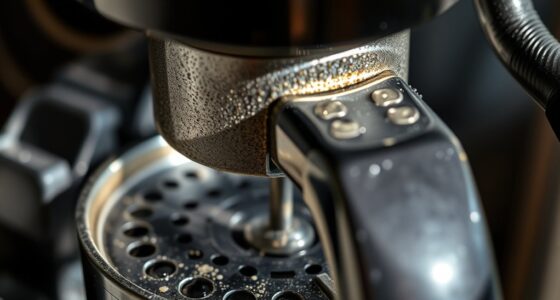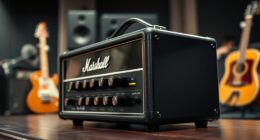Your kitchen appliances in standby mode are silently wasting more energy than your air conditioner during normal use. Devices like microwaves, coffee makers, and smart gadgets draw power even when off, creating phantom energy that can add up over time. This ongoing power drain can substantially raise your energy bills. If you want to find out which appliances are the biggest culprits and how to cut back on this waste, there’s more you can do to save.
Key Takeaways
- Many kitchen appliances, like microwaves and dishwashers, draw power in standby mode, causing significant energy waste over time.
- Modern appliances with digital displays or smart features often consume 16+ watts continuously, silently increasing energy costs.
- Internal clocks and network connections in kitchen devices contribute to phantom energy drain, often exceeding the energy use of the device itself.
- Standby power from kitchen appliances can account for up to 30% of household energy costs, often unnoticed.
- Unplugging or using smart power strips for kitchen gadgets significantly reduces their hidden energy consumption.
The Hidden Power Drain of Standby Mode
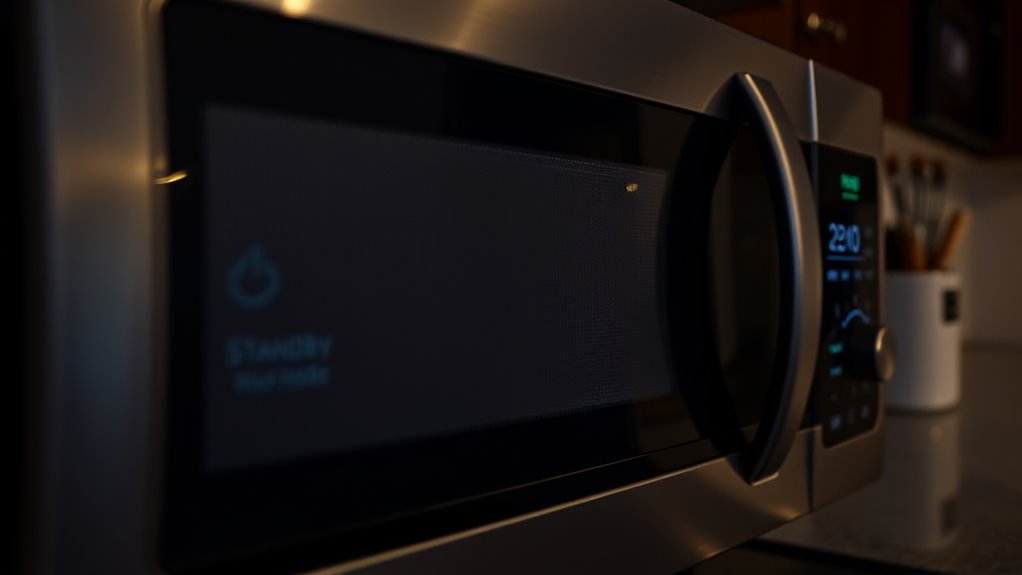
Many kitchen appliances, like microwaves, coffee makers, and dishwashers, keep drawing power even when they’re turned off. This standby mode leads to phantom energy, causing unnecessary energy waste and increasing your household appliance’s overall energy consumption. The power drain from standby power can silently add up, sometimes costing you between $0.67 and $6.28 annually per device. Devices with internal clocks, sensors, or remote controls require constant power, which keeps them running 20 hours a day without your awareness. Electronics with internal features often contribute to this ongoing energy drain. To cut down on energy waste, consider unplugging appliances when not in use or using smart power strips. These strips can eliminate up to 90% of standby power, improving energy efficiency and saving you money on utility bills while reducing environmental impact. Additionally, understanding standby power consumption can help you make more informed decisions about your household appliances. Being aware of energy management strategies can further optimize your home’s energy use and reduce costs.
How Modern Appliances Continue to Consume Energy
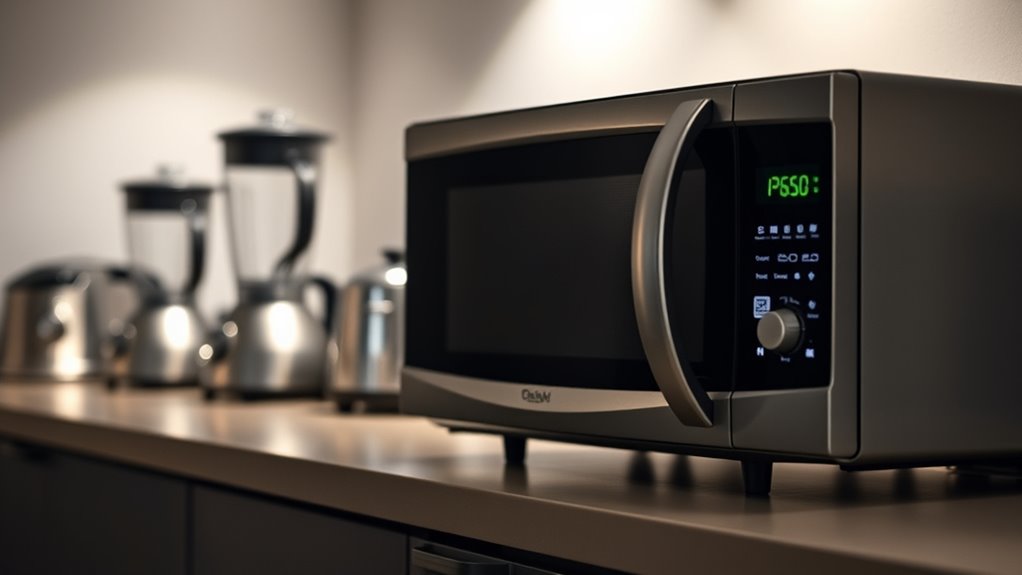
Modern appliances like microwaves, coffee makers, and dishwashers often keep drawing power even when they’re turned off, leading to ongoing energy costs. This standby power, also called vampire energy, contributes considerably to household energy consumption—up to 10% of total use. Devices with digital displays and smart features stay connected to the internet, maintaining internal clocks and network links, which consume about 16 watts or more, even in sleep mode. This persistent power drain results in phantom loads and energy waste, silently inflating your utility bills. To combat this, you can unplug appliances or use power strips to cut off power when devices aren’t in use. Doing so helps reduce phantom loads, saving money and making your home more energy-efficient. Additionally, understanding appliance maintenance and managing standby power can significantly improve your home’s overall energy efficiency. Regularly monitoring energy consumption and adopting energy-efficient practices can also contribute to reducing unnecessary energy consumption. Being aware of the hidden energy costs associated with modern appliances encourages more mindful usage and can lead to substantial savings over time. Furthermore, implementing energy-saving technologies can optimize appliance performance and further cut down on waste.
The True Cost of Energy Sucked by Kitchen Devices
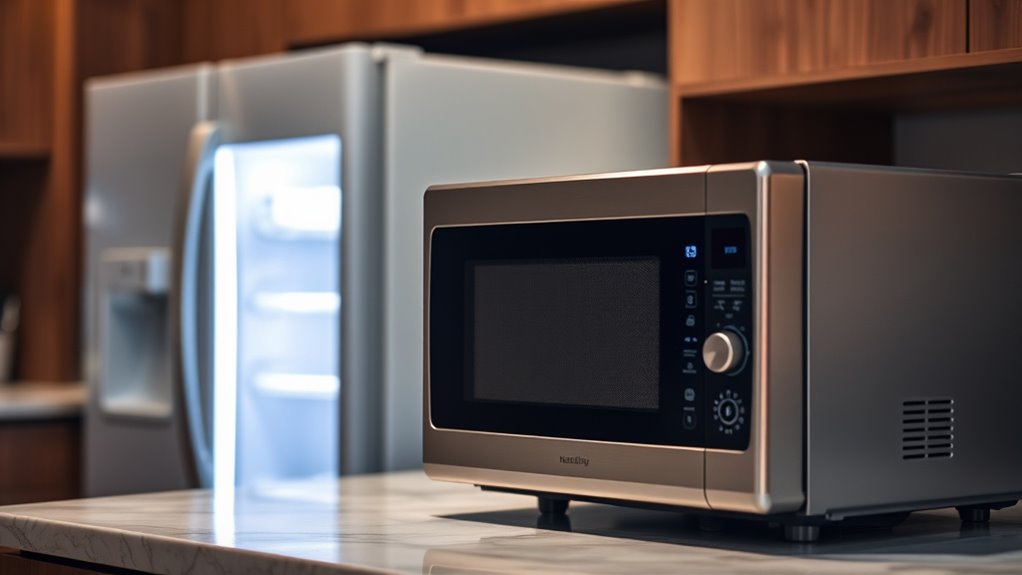
Kitchen devices like microwaves, coffee makers, and dishwashers quietly drain a significant portion of your energy budget even when they’re turned off. This standby power, or vampire loads, can account for up to 30% of household energy costs. A microwave on standby wastes about $6.28 annually, while older refrigerators and ovens continuously consume power, adding to your bills. Devices like cable boxes and gaming consoles also contribute, costing over $19 yearly in phantom energy. To combat this power drain, unplug small appliances or use smart power strips. Additionally, understanding the different energy-efficient appliances can further reduce unnecessary consumption and save money. Regularly monitoring and managing these devices can significantly reduce your energy consumption and lower utility bills over time, especially with the adoption of energy-saving habits that promote mindful usage. Being aware of phantom loads helps you identify hidden energy drains and take targeted actions to improve efficiency.
Simple Steps to Reduce Phantom Loads in Your Kitchen
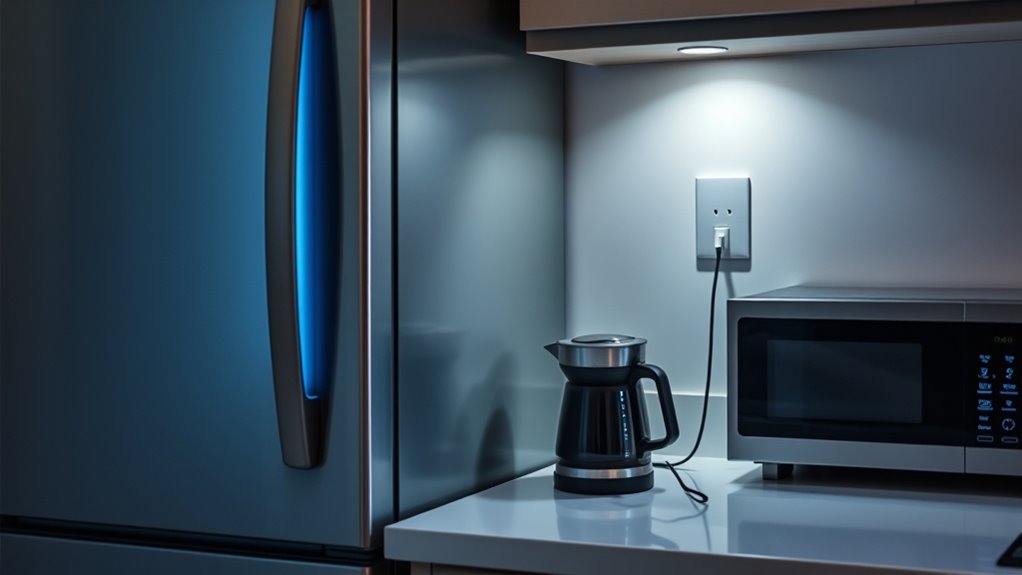
Reducing phantom loads in your kitchen is a straightforward way to cut unnecessary energy use and lower your bills. Standby power from appliances like microwaves and coffee makers can silently add up, costing you up to $6.28 annually per device. Many appliances, including refrigerators and dishwashers, draw power even when off, increasing household energy costs. To combat this, unplug appliances when not in use or connect multiple devices to power strips, which you can turn off easily. This simple step helps eliminate standby power, reducing waste and unnecessary energy consumption. Monitoring your energy use and identifying the biggest drainers allows you to make smarter choices. Being aware of standby power consumption can help you take targeted actions to improve appliance efficiency and save money over time. Additionally, understanding energy-saving practices can further optimize your household’s energy efficiency.
Choosing Energy-Efficient Appliances to Save Money
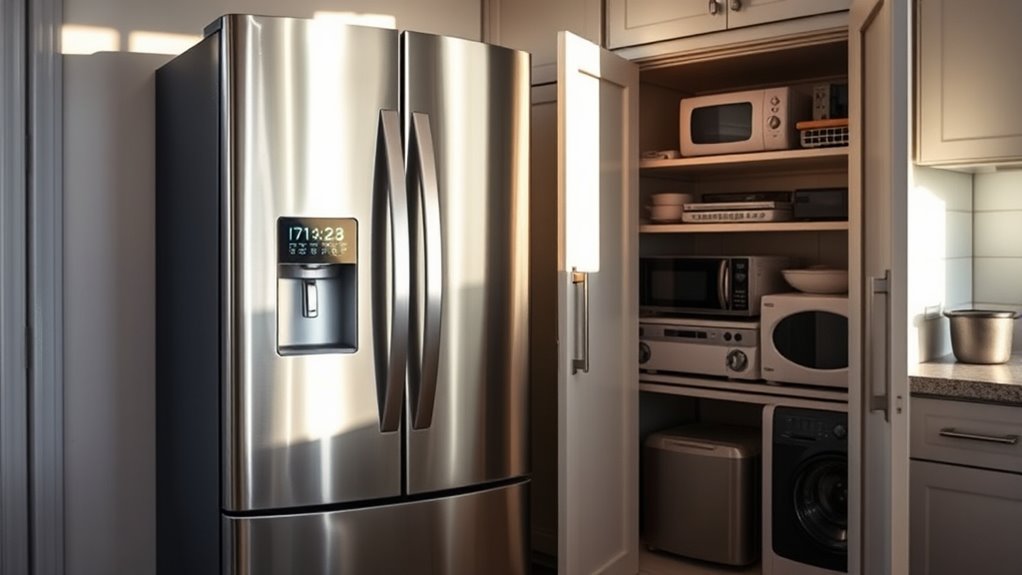
Choosing energy-efficient appliances can substantially lower your household energy bills, especially when you select models with ENERGY STAR certification. These appliances are 15-35% more efficient than standard models, helping you reduce energy consumption and cut energy costs. Modern appliances with advanced insulation, smart controls, and inverter technology use less power while maintaining high performance. Replacing outdated refrigerators, ovens, and dishwashers with ENERGY STAR certified options can lead to significant household energy savings annually. Features like AI diagnostics and IoT connectivity optimize appliance efficiency, ensuring minimal energy waste. Proper appliance maintenance, such as regular cleaning and calibration, also enhances their efficiency and prolongs lifespan. Additionally, energy consumption awareness encourages more mindful usage and can lead to further savings. Investing in best vacuums for dust removal with HEPA filters can improve indoor air quality while reducing the need for frequent cleaning, further conserving energy. By choosing smart, efficient appliances, you maximize energy savings and enjoy a more cost-effective, eco-friendly kitchen.
Frequently Asked Questions
What Appliance Is the Biggest Energy Wasters?
You might wonder which appliance wastes the most energy in your kitchen. It’s often your electric water heater or oven, especially if left on or used inefficiently. Standby power from devices like cable boxes, TVs, and smart appliances also adds up silently. These often consume more energy than you realize, quietly increasing your bills. To save, turn off unused appliances and consider upgrading old, inefficient models.
Which Appliance Is a Real Energy Drainer?
You’re asking which appliance truly drains your energy. Many kitchen gadgets, especially older refrigerators, ovens, and devices in standby mode, silently consume power. Cable boxes and entertainment devices often draw significant watts even when off. Smart kitchen appliances and high-end coffee makers with warming functions also waste energy when idle. To cut costs, unplug or manage these devices smartly—saving you money and reducing your household’s energy footprint.
What Kitchen Appliance Uses the Most Electricity?
You might wonder which appliance uses the most electricity in your kitchen. Typically, it’s the refrigerator, especially older models built before 1980, consuming over 1,500 kWh yearly. Even modern refrigerators with advanced features still account for about 15-20% of your kitchen’s energy use. To cut down on waste, consider upgrading to an energy-efficient model, and avoid leaving doors open or setting the temperature too low.
Which Kitchen Appliances Use the Least Electricity?
You might be surprised, but many small kitchen appliances use very little energy. Kettles, for example, only need about 0.1 to 0.2 kWh per boil, especially if you only heat what’s needed. Toasters and microwave ovens also consume minimal power, around 0.2 to 0.5 kWh and 0.035 to 0.15 kWh respectively. Compact dishwashers and energy-efficient coffee makers are even more efficient, making them great choices for saving energy.
Conclusion
Now that you know how much energy your kitchen appliances quietly drain, are you ready to take action? Switching off devices, unplugging when not in use, and choosing energy-efficient options can make a real difference. Don’t let hidden phantom loads silently waste your hard-earned money and energy. Isn’t it time you reclaimed control over your power bills and environmental impact? Small changes can lead to big savings—so start today and make your kitchen more efficient.



